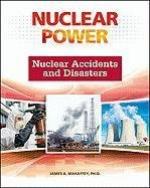|
This section contains 749 words (approx. 3 pages at 300 words per page) |

|
Nuclear technology by its very nature is highly complex, incorporating sophisticated mechanical as well as chemical technologies that make use of, and create as waste, substances that are highly toxic to all animal and plant life. Complex technologies require foresight and vigilance during their design, construction, and operation. They also demand constant and effective regulatory oversight, both by industry and government. Unfortunately, the history of nuclear technology suggests that such conditions frequently are not met. Moreover, even when they are met, accidents may still occur.
Inherent Dangers
Scientists in the early twentieth century were some of the first victims of nuclear accidents, since the immediate hazards- and the deadly long-term effects of radiation-were not initially well understood. Among the most famous victims was Marie Curie, the Nobel Prize-winning chemist who discovered the surprising, self-decaying properties of the element radium in 1898. Curie coined...
|
This section contains 749 words (approx. 3 pages at 300 words per page) |

|




